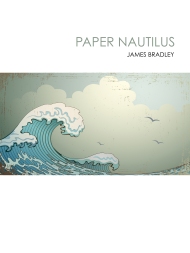Some thoughts about Avatar Part 1: 3D and reality
Given the sheer volume of discussion of Avatar online, and the fact that it’s now a month since the film was released, I’ve been a little reluctant to chip in with my two cents worth. But while the time for anything like a straight review is long past, I feel like there are some things worth saying about it that don’t seem to have been said to date.
Because what I want to say is reasonably extended, I’ve decided to break it up into two (or just possibly three) posts. The first – this one – is about the 3D technology of the film; later in the week I want to say a few things about the film’s broader message, and perhaps about what it is that seems to work (and not work) in it.
To begin with, I think it’s worth observing just how overwhelming the response to the film has been. I can’t think of another film in recent years which has generated anything like as much commentary as Avatar, or (perhaps more interestingly) which has managed to chew up so much bandwidth across so many channels. You’d expect a genre film, especially a genre film as expensive and technically striking as Avatar to be generating a lot of commentary on sites which cater to fanboys, but it’s a lot less usual for a genre film (or indeed any film) to be generating continuing commentary on the opinion pages of the major international broadsheets.
At least part of this can be attributed to the film’s politics, which have enraged right-wing commentators around the world (or at least inspired the sorts of absurd posturing that passes for outrage in right-wing circles). I’m not going to rehash their arguments here, which mostly turn on the mawkishness of the film’s ecological and political subtexts, but I would observe that there’s something telling about the sheer ferocity of the Right’s hostility to messages which are, at one level, so unexceptional (after all, as Elvis Costello almost asked, what’s so threatening about peace, love and understanding?).
But I’m not sure the somewhat confected political debate about the film’s politics really explains its transformation into a full-blown cultural phenomenon. Certainly it’s difficult to imagine the armies of people who’ve trooped off to see the film having a Road to Damascus moment as they head home to their houses filled with the sort of consumer technologies that made the film possible and deciding to give it all away for a simpler life (nor, I suspect, would the many corporations with a stake in its success be impressed if they thought its anti-consumerist message was actually hitting home).
Instead the film’s impact seems to be a result of the technologies that make it so striking, in particular Cameron’s extremely sophisticated fusion of 3D and digital special effects.
In itself this is hardly a remarkable observation, but stay with me for a moment. 3D isn’t new, but after the success of Avatar I think we can assume it’s here to stay. There have already been announcements that films ranging from the new Bond film to 2012’s Star Trek 2 and the now-Sam Raimi-less Spiderman 4 will be shot in 3D, and while the technology will presumably take a while to trickle down into smaller, less spectacle-driven productions, I think there’s little doubt it will.
To my mind the interesting question isn’t whether 3D will gradually displace older, 2D technologies, but what that will mean for the way we see and experience film (or indeed whether it is fair to continue to describe the future of visual storytelling as “film”). As anyone who’s seen it knows, what’s really exciting about Avatar isn’t the story (though to tell the truth, I found it completely absorbing, all my caveats about the woodenness of its storytelling notwithstanding) or even the effects (which are, quite simply, extraordinary) but the sense of immersion. As many before me have observed, the film largely declines to employ the sort of cheesy things-shooting-out-of-the-screen-at-you gimmicks 3D films have usually confined themselves to, and instead concentrates on creating a world you enter as if it were real.
Interestingly, I think the sheer novelty of the experience rather overwhelms the fact that as a simulation of real space the film is actually rather crude. There’s depth, but objects and figures often seem more like planes moving in space than actual three-dimensional things (rather like a $300 million Captain Pugwash cartoon, I suppose). That’s not to say it isn’t amazing, and – as the film’s publicity reminds us – unlike anything we’ve seen before, but it is to be reminded that for all its wonder to an audience in 2010, within a decade Avatar is likely to look as crude as the original Star Wars does now. Likewise I suspect it’s fair to assume that 3D film and television are probably only transitional technologies, and that the future lies in holographic projection or some similar technology.
But crude or not, I think there’s little doubt Avatar is the embodiment of Cameron’s recognition that cultural forms are, in a very deep sense, artefacts of the technology that create them. Novels take the form they do because of the codex book, movies the cinema (and increasingly, television) screen, video games the computer screen. So moving from 2D to 3D isn’t just about adding depth to films, it’s about creating something new, something unlike anything we’ve had before.
In a minor way this is visible in the textures of the film itself. Despite the immersiveness of the 3D Avatar often seems curiously flat texturally. Given the riot of colour that is Pandorum, it would be impossible to describe it as washed-out, but more than once I found myself nostalgic for the vivid density of colour digital images and digital film have made us familiar with. There are a few moments that have it – most memorably the early scenes in space, which draw upon NASA’s photographs of the ISS and shuttle missions – but for the most part Pandorum (and by extension the film itself) doesn’t look dense or vivid enough to be “real”.
But this density of colour is itself new, a consequence of the shift to digital imaging, and the increasingly blurry line between reality and representations of reality, a line films like Avatar are making even blurrier. What looked “real” to an audience familiar with Technicolor looks strange to us, just as the more liquid surfaces of analog photography seem increasingly other-worldly to a culture more accustomed to digital reproduction.
This is doubly true of Avatar’s use of 3D, which breaks the fourth wall in a truly revolutionary manner. Instead of watching the film, the audience are in the film. I’ve not read everything that’s been written about the film, but it seems odd to me that people haven’t made more of the fact that Cameron quite deliberately situates a second, imaginary immersive technology at the centre of the film, as if to suggest the film is, in some small way, a very crude version of what Sully and the others experience “dreamwalking” in the avatars themselves.
But the avatar technology also – and importantly to my mind – invokes the computer game. I don’t mean by this that the film is intended to celebrate gaming or leverage a computer game (though it’s certainly not too cynical to suggest there’s nothing accidental about the very obvious continuity between the textures of the film and the textures of Avatar: The Game). Instead I think Cameron invokes gaming because he understands – whether consciously or not – the synergies between the immersiveness of 3D moviemaking and the computer game.
In a very crude sense, computer games and film have been converging for some time. In the gaming world it’s long since ceased to be surprising for a game to be “cinematic”, and, conversely, I think it’s fair to say the largely digital textures of a lot of action and science fiction films often seem to resemble those of the more sophisticated games.
Critics of games and gaming usually point to the crudeness of the interactions, or the lack of interiority in games as a sign of their inferiority to older forms such as fiction and film. But that seems to me to miss the point. Games aren’t about interiority, they’re about agency, and often, the creativity of the player. They are an experience, a means of entering another world.
Of course this is precisely what Sully does in the film when he steps into his avatar’s body (and again when he leaves the control of the mission and becomes one of the Na’vi), and what, in a cruder sense, the film allows the viewer to do. And while the agency enjoyed by a player is absent, the sense of immersion moves the experience beyond that of passive consumption, suggesting something more like possibility, or even escape. Indeed the film very deliberately suggests this longing for freedom, and for escape through its early concentration on Sully and his ruined body, and the sense he only becomes fully alive, and fully real in the moment he steps into the avatar.
Which brings us back, I think, to the question of what 3D will do to film, and perhaps more profoundly, film’s storytelling. All forms of fictional narrative – novels, films, television series, even fairy tales and folk stories – create worlds. But the shift to 3D makes this process central, emphasising the viewer’s immersion in the world of the film, just as computer games emphasise the player’s immersion in the world of the game. It also, in the longer term, suggests new forms of interactivity, and, I suspect, narrative possibilities (at the very least POV pornography is unlikely to ever be quite the same). And, more deeply, it hastens our transition into a world where the virtual and the real are essentially indistinguishable, and where our sense of what is real is hopelessly enmeshed in the technologies we use to reproduce it. As filmmakers like Cocteau understood long ago, 2D film has always, at some deep level, been about a kind of dreaming, a way of projecting our fantasies onto the screen (it’s not accidental we watch movies in the dark, or that film is essentially insubstantial, a play of light upon a screen); with 3D those dreams cease to be insubstantial, and begin to populate the world around us.
Break text











Exellent post James!
Hi James, I enjoyed your post very much. And, like you it seems, I enjoyed Avatar more than I thought I would – I was more than happy to go along with the story and the effects. I was also amazed to see a packed cinema get with the film from the opening moment until the closing – the audience really was immersed. But, for me, the effects got in the way of the story. I did love the world Cameron created, in fact I thought it was extraordinary, and I do take your point that there’s a real fourth-wall crashing going on in this film, but after a while it became more than a little tiresome (caused by the heaviness of the glasses perhaps?). My whole body felt immersed that by the end I ached from it all. Part of me was crying out for a bit of 2-D cinema magic – just blow me away with a good yarn and some thoughtfully constructed moving images. Is Avatar showing us the future of film? Call me old-fashioned (because undoubtedly I am) but I do hope this isn’t going to be the sort of cinema experience I’m going to have for the next forty years of my life.
It will be interesting to look back on this period in, say, 10 years time to see what impact this film actually had. Especially as a number of commentators had begun to question the increasing use of CGI effects in film. Maybe AVATAR has come along at just the right time for the film industry: blowing 2D CGI out of the water and giving us something else to ponder for the next few years; and getting people back into the cinema again to see old stories told in a different way. Blu-ray probably didn’t do anything for cinema except give viewers another reason to stay at home.
There are rumours that 3D TV will be available soon. But didn’t we all just spend up big on flat-screens, and now you want us to spend another 5K on another incompatible version? Nope, don’t think so.
You allude to a major point in your piece when you mention Cameron’s use of the 3D technology. I was actually impressed with his restraint: a few floaties drifting past and maybe a spear sticking out but that was about it. Don’t expect that other film-makers will hold back on this stuff. POV horror movies told from the point of view of the victim? No thanks. But you get the idea.
The other thing that got me about the AVATAR cinema experience was the number of trailers for upcoming 3D films. Is this going to be the great jump in cinema technology, similar to the introduction of sound or colour? In the next few years while the technology is new and fresh I think it might just about seem like it is. In ten years, however, we might just need to move to the “feelies” for our next buzz. BRAVE NEW WORLD, wasn’t it? The porn industry is just going to be all over this stuff.
Talking about the connection between new cinematic technologies and the sense of liberation and escape, I’m reminded of the moment in The Wizard of Oz when Dorothy steps out of B&W Kansas and into the then-new world of Technicolour. The character, the narrative and the form of the film all take a step into something new, wonderful and beautiful.
Pentrating stuff as ever James, but I have a hunch the business model might end up the problematic speedbump to be negotiated (or not) here by Dinosaur Inc (Celluoid Division) – as with so much of the new technology. Clearly Hollywood can still recoup – and then some! – the outlay of $300 ($400?) milion when there’s only one New Show in town, but when everyone’s doing it, I wonder. I suppose the production economies of scale for the new 3D-etc might come down a bit, but you can’t help thinking that there’s been an element of south sea bubble to the spiralling cost of mass audience visual art since the Jaws/Star Wars revolution of the seventies.
Culturally Avatar might one day turn out to have more in common with a Pyramid, a Hanging Garden, a white elephanty auteur’s folly/Wonder of the World, than proven itself the avant gard of a new (sustainable) mode of creative expression. Actually, a better analogy is probably something like…ever-dazzling-er 3D movies like Avatar as modern version of those increasingly elaborate illustrated tomes – bigger, better, more lovingly ornate – that gamely tried to outgun/keep up with the ‘internet’ of the day for quite some time before fizzing out for good: mass-run print books. Let’s face it, not even James Cameron can out-bedazzle the internet in the interactive, dazzle-us, story-telling game.
Trooly we’re living in head-f**king times, dude. And ain’t it grand!? Power to your pen for the year.